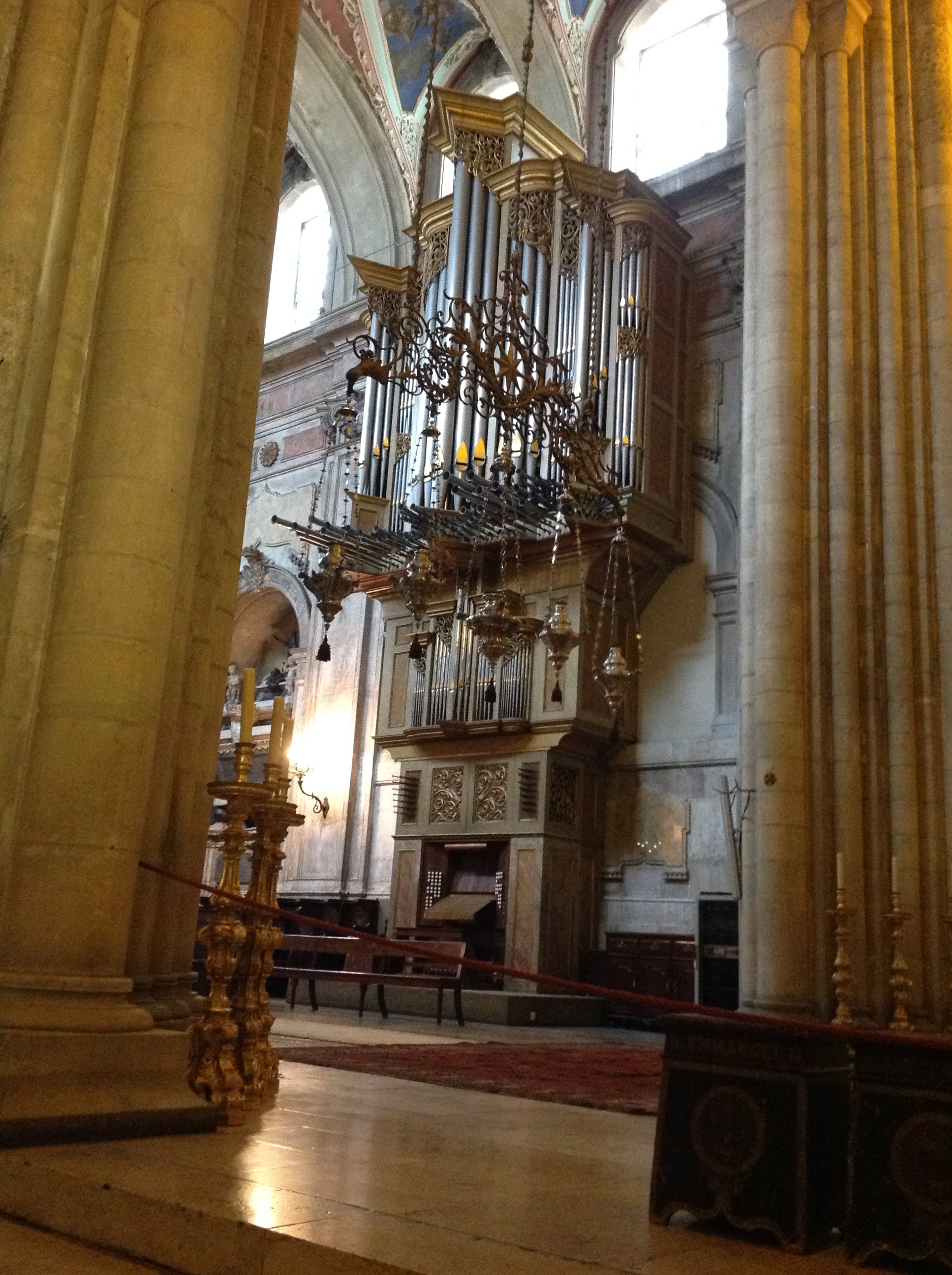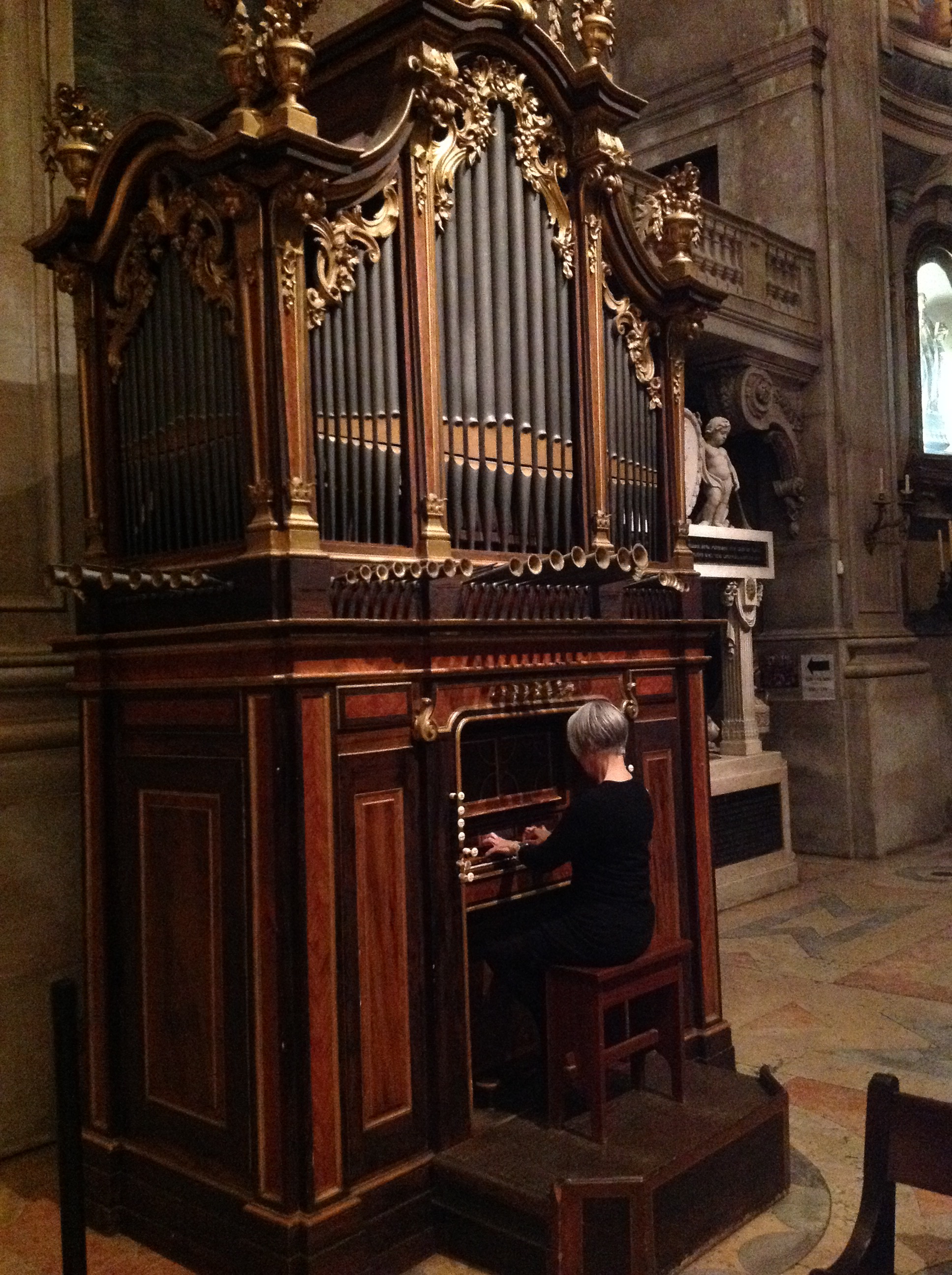OLÉ…
Every now and again, I am lucky enough to be invited to accompany a choir that goes on holiday abroad and does a bit of singing, usually in very nice surroundings with an appreciative audience. Memorable visits have been to Norway, Denmark, Portugal, Holland, Italy, Estonia, Bosnia, and Belarus. Venues are mostly churches, some very large, some smaller, some deconsecrated; others are posh rooms rather like a library, and one was a school hall. This year’s trip was to Spain. As organist to these groups, one is presented with a folder of choral music, some accompanied, some unaccompanied. My job is to know it all very well, and be able to jump onto any instrument presented, deliver the right notes, in the right order, in the right time with appropriate sounds. It helps to research any potential instruments before making the journey, and not to misread the name of a venue.
This time, I was looking forward to playing the Madrid Cathedral organ built by Gerhard Grenzing of Barcelona and ended up unexpectedly on a two manual and pedal Cavaillé Coll in a large church further down the road. I had misread the notes, (but then remembered that Cavaillé Coll had helped his father service organs in Spain, learning much about their excellent reeds). The choir was very distant in the very large acoustic of the Franciscan church which was covered from floor to domed ceiling with large, colourful works of art. Needless to say, the accompanied items were not sung as it was impossible to accompany choruses by Handel, Haydn, even the lovely Cantique de Jean Racine by Fauré, as neither party could hear each other. From my position in the west gallery, the choir and conductor looked tiny. Instead, with some Cabanilles’ organ verses for mass up my sleeve, with short preparation time, organ solos replaced choir items. The other venues yielded hired instruments of differing style and set up. One was a Hammond B3, which had two manuals and a nearly full pedal board, so I could play everything normally. This organ was much more suited to Procol Harum’s A Whiter Shade of Pale, than any of our classical favourites. With the spinning discs turned off, however, the tone of the organ consisted of respectable flute sounds which had to be the same, with some pitch variation, for every item! In the final venue I knew to expect a pop style keyboard and wondered how to adapt my scores. Neither keyboard had enough notes, the top one played single notes only, the lower one’s range stopped at F, limiting the all-important bass line. The pedal had one octave of notes, suitable only for cadences at the ends of movements and the volume range was not exactly extensive. Once at the venue, I realised why nothing bigger had been provided, this was the only portable instrument that would fit in the tiny available space. So this was a case of make it up as you go along, thin out the accompaniments to their bare bones, i.e., chords and bass lines, and give enough of the interludes to show where we had reached. Any satisfaction came from the knowledge that I was capable of managing this on an inadequate instrument on the spot, and did so. The audience roared its approval at the end.
What was interesting was the number of beautiful churches and cathedrals that had glorious looking traditional Spanish organs that looked in good shape, clearly in use, and yes, they all had fine looking trompetas en chamade. Some had two organs facing each other across the choir, suggesting that alternatim practices, probably for psalm singing, are still in use, rather like Decani and Cantoris in UK cathedrals and larger churches. What also was interesting is that in no church or cathedral was there any information about these instruments and no documentation to say who played them. The audio guide to Toledo Cathedral stated that polyphonic music was sung by professional singers, and a short recording of the organ, featuring music possibly by Cabanilles, had been made by the Director of Music, but nothing else. I did meet a young Director of Music in Madrid, but he spoke no English and I speak no Spanish, but I did manage to convey that middle G on the Cavaillé Coll was seriously out of tune, and he was cross about that on our behalf. So, perhaps it is the old story of, it’s not what you know, it’s whom you know that counts in Spain’s mostly closely guarded organs. Music tour companies, who fix the gigs abroad for UK choirs and orchestras, understand the needs of such groups, i.e., plenty of chairs on a large platform and enough light, but organs and organists are not fully understood. Either personal contact or a specialist would be able to open the door to the organ loft. Our church in Madrid was an exception, and the tour organiser was clearly familiar with churches where concerts by groups like ours were welcome. In Lisbon two years ago I was allowed to play the cathedral organ, a four manual and pedal Flentrop, and in the beautiful Basilica Estrella, a restored 18th century chamber organ. My credentials were required for this latter instrument and I saw others of similar design that needed money to repair them, but there was none, I was told. Perhaps we are luckier in the UK than we imagine.
Audiences appreciated our group’s efforts, but it was interesting to note their puzzled reactions to Handel and Haydn choruses. Full of counterpoint and English texts that entertain UK singers, witnessing these audiences’ non reaction to these cherished items, made one realise the fact of there having been no religious reformation in Spain, giving rise to a lack of familiarity with music based on reformed texts and ideas. We heard a Saturday evening mass in which the music consisted of a lovely solo soprano accompanied by a guitar. This happens in the UK where there is a Spanish community. But the announcement of a Latin title was enough to elicit a whoop of delight before the piece had been sung. Ave Verum Corpus and Laudate Nomen Domini were familiar texts to our audiences, as was a set of Spanish partsongs about Don Quixote by Halffter.
All trips like this are much more than music making with nice people. Travel broadening the mind, one learns a lot about the country’s culture, including geography, topography, history, and I returned home wanting to understand more about this sun soaked country where much EU resource has built impressive motorways across tracts of land that have no cattle grazing, no visible water, few electricity pylons. Yet, cities like Toledo and Avila have the most amazing centuries-old buildings and squares which teem with life and an amazing richness of culture that leaves one’s jaws dropping….
Temperatures being high those few days, Christmas and all its trappings seemed a million miles away. Not long after returning, however, it was cooler, greyer and the clocks went back. Requests for carol services soon started to appear, and much music will have been learned by the time you are reading this. One wonders where autumn went. May you all enjoy a happy and musical Advent, Christmas and New Year.
Marilyn Harper



